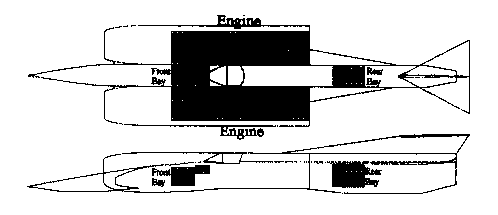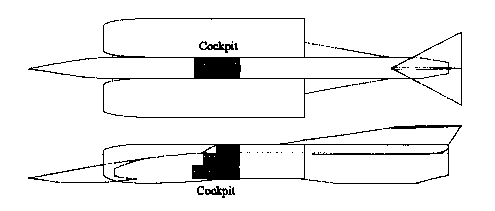The fire system designed and constructed by Kiddie International's Les Garden and Andrew Hills comes in two parts, a vehicle protection system and a driver protection system. These systems, while separate, have the same basic components, extinguishers and a control unit. However, while the vehicle system uses fire wire for detection, the driver system uses an optical infra-red device.

The diagram above shows the arrangement of the basic components. The core of the system is the controller designed by Andrew Hills of Kiddie International. On start up the fire system initiates a self test where, the pressure sensors are checked to ensure the extinguishers are charged, the fire wire loop are checked to ensure they are complete, and the cartridges on the extinguishers are checked to ensure they have not been fired. The cockpit lights (shown below) are also illuminated for a short while to ensure the bulbs are working. If any fault is detected then the cockpit fire lights are flashed continuously for 30 seconds.

In the event of fire during the run the fire wire loops will be heated by the flames. This will cause the wire's electrical properties to change. It is this change which is detected by the control system. The system then illuminates the appropriate fire caption in the cockpit. Our driver Andy Green can now fire the appropriate extinguisher by pressing the lit caption. If the fire is successfully extinguished then the fire wire will cool and the cockpit caption will go out. The placement of the fire wire has been left in the experienced hands of Kiddie International's Les Garden who has ensured that the fire wire is in the optimum position for detection. Finally in the event of a crash an omni-directional inertia switch will fire all the extinguishers. The vehicle protection system is intended to deal with the fire at source - the sources being the engines and the front Hydraulics and Electronics bay and the rear Hydraulic bay shown in the diagram above.
This part of the system consists of four extinguishers one for each bay and one for each engine. The extinguishing media is a human safe, environmentally friendly halon substitute. The fire detection is achieved by using fire wire run around critical components in the engines and bays.

The driver protection system in principle is similar to the vehicle protection system but is only concerned with the cockpit area of the vehicle.
This system requires a different detection method, as it is generally accepted that drivers tend to be more sensitive to heat than mechanical systems. Hence, optical infra-red detectors are used to sense cockpit fires. As with the vehicle system once a fire is detected then the cockpit fire indicator light comes on. At this point the driver has a choice of extinguishers. The first is a halon type system as found on the rest of the vehicle. This will deal with any flash fires making the cockpit immediately safe from fire. The second system introduces a water mist into the cockpit area for a minimum duration of 15 minutes. This system maintains the survivability of the cockpit crash cell should for any reason the driver find himself trapped for a time. Finally, the same omni-directional inertia switch, which will set of the vehicle extinguishers during a crash, will also set of the two cockpit extinguishers.
In fact it is safe to say that the omni-directional inertia switch can be likened to a medical student, in as much as it sole purpose in life seems to be to set off fire extinguishers. However the inertia switch doesn't drink as much and is considerably cleverer.
Jeremy Bliss, January 1996
 |
 |
 |
||
| Sponsored by | This site best viewed with Microsoft Internet Explorer 3 | |||